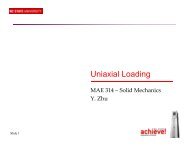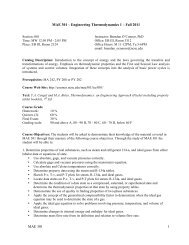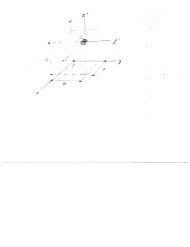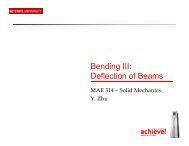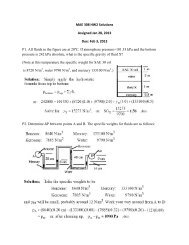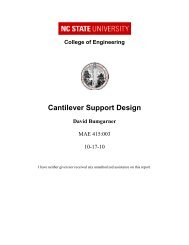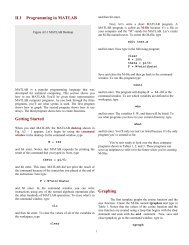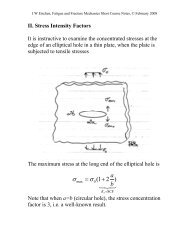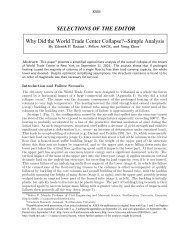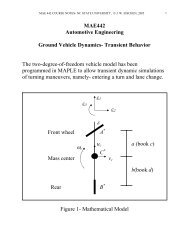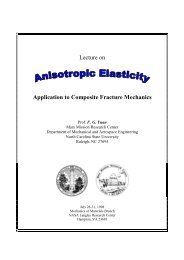The Online Ethics Center for Engineering & Science - Department of ...
The Online Ethics Center for Engineering & Science - Department of ...
The Online Ethics Center for Engineering & Science - Department of ...
You also want an ePaper? Increase the reach of your titles
YUMPU automatically turns print PDFs into web optimized ePapers that Google loves.
<strong>Online</strong> <strong>Ethics</strong> <strong>Center</strong>: Further Evidence <strong>of</strong> the DangerTexto en EspañolPart 5 Further Evidence <strong>of</strong> the DangerLeMessurier now believed there might be serious danger. He turned to Alan Davenport, a Canadianconsultant during the building's design. Davenport, who had run the original wind tunnel tests, now ranthe tests again, using new calculations to reflect quartering winds and the change from welds to bolts.<strong>The</strong> results, when compared with the building's original testing, confirmed LeMessurier's suspicionsabout increased stress in some <strong>of</strong> the building's structural members. His concern grew, since the resultsindicated that a 40 percent theoretical increase in a member's structural stress would be much greaterunder real-world conditions. During a storm, the whole building could shake, causing the structuralmembers to all vibrate synchronously.LeMessurier worked through the revised wind tunnel data, and quickly discovered that the entirebuilding was vulnerable to a total structural failure -- if a storm pulled a joint apart on the 30th floor, thewhole building would collapse. A "sixteen-year storm," that is, a storm occurring once every sixteenyears, would have the strength to cause total structural failure. Though the electric tuned-mass damperhad an enormous steadying effect on the building, and might help to reduce the stress on that joint, astrong storm would knock out the electricity necessary <strong>for</strong> running the damper.Solving the problem was not difficult from an engineering perspective; heavy steel welded "Band-Aids"over the joints would give the building more strength than it was even originally designed to have. But itwas the last day <strong>of</strong> July, and in order to complete repairs be<strong>for</strong>e the start <strong>of</strong> hurricane season,LeMessurier would have to announce the building's vulnerability and take responsibility upon himself.Doing so could cost LeMessurier his career and reputation as a structural engineer. He did not know howhis news would be received by Citibank leadership, city <strong>of</strong>ficials, or the general public.Continue on to Part 6Go back to Part 4Back to LeMessurier Main Pagehttp://onlineethics.org/moral/lemessurier/5.html [10/13/2004 1:44:53 PM]




